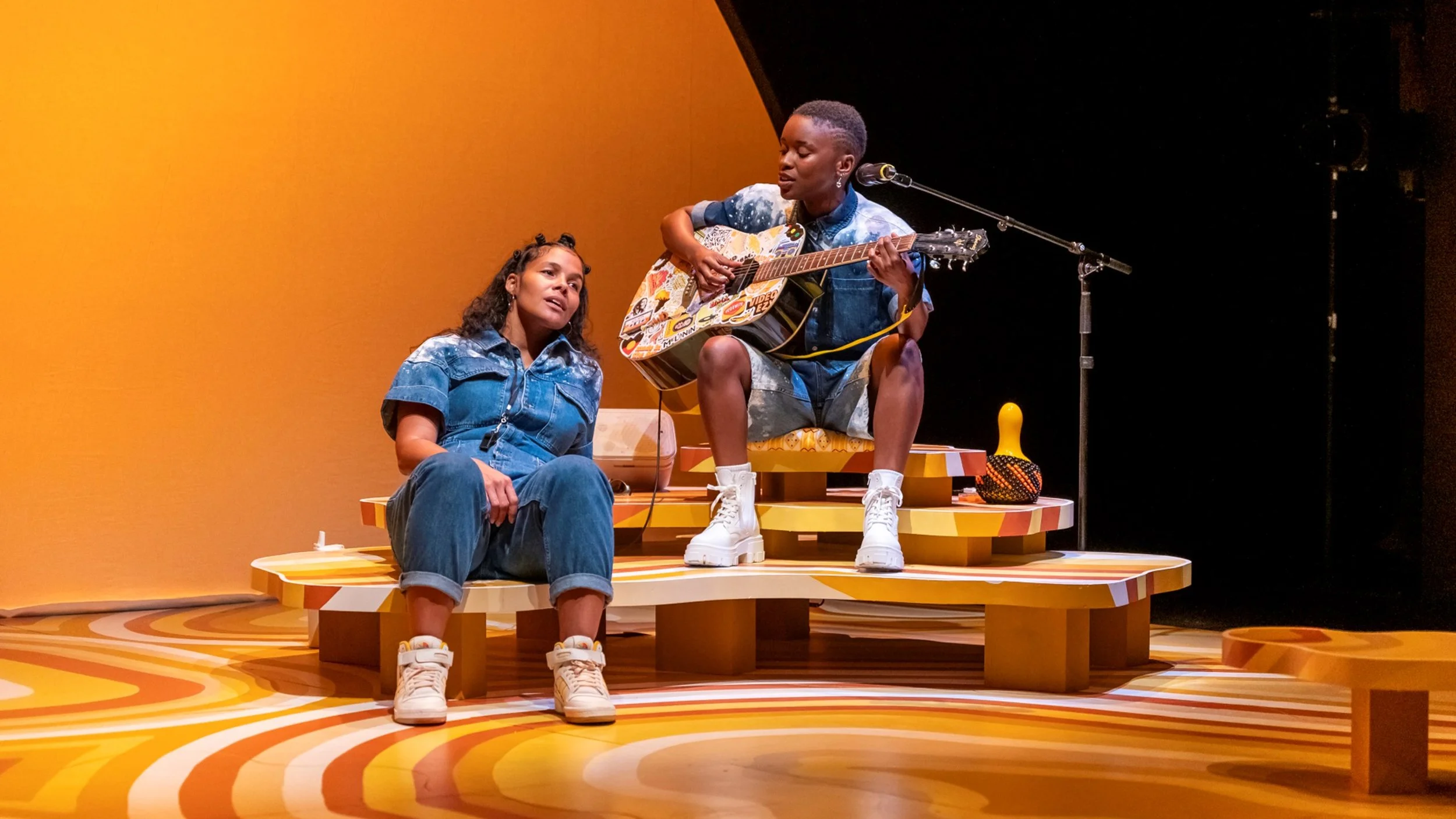Review: The Hate Race
“A production like this, showcasing these nuances in the world is one of many ways in which we can become aware and vigilant of these things. It facilitates conversations. It platforms black narratives, it creates a ripple effect where someone like me can have thoughts about these things, examine them, write them, and share them. Which leads me to— we need more art like this!” - Kanika Chopra reviews The Hate Race for MAV
Zahra Newman stars, accompanied by musician Kuda Mapeza. Photography by Tiffany Garvie.
Best-selling, award-winning memoir by Caribbean-Australian writer Maxine Beneba Clarke, The Hate Race just had its theatrical premiere at the Malthouse on 28th February. It’s a play based on Maxine’s experiences growing up in Western-Sydney in the 80’s. Through vignettes, we see Maxine’s journey from primary school to high school, and how she navigates her very white world.
The play was almost a solo performance by Zahra Newman. She played Maxine through the ages, and her mother, brother, friend, father, bullies, teachers, and all other characters that feature in Maxine’s journey. Apart from the first black actor who was Maxine’s Australian TV representation, that was played by Kuda Mapeza.
Zahra and Kuda were the only two people who occupied the stage for the entirety of the play. Kuda supported Zahra through the play with sound cues, tracks and effects using their soulful voice, acoustic guitar, and a few percussion instruments. All while Zahra played the many characters in Maxine’s life effervescent as ever, convincing me that she was in fact, all those people.
Newman and Clarke braided narration, action, and the characters internal monologue seamlessly. Effectively conveying the micro-aggressions and aggressions Maxine faced at school as a black person in Australia. We learn about Maxine’s relationship with her family, friends, teachers, and her own identity. Even with themes of racism: writer, actor, and production team did a great job of adding levity in such a way that the messaging of the production didn’t sit heavy with you, but it didn’t undermine it either.
As someone who hasn’t read the novel and is approaching this from the perspective of a theatre novice, I can’t appropriately judge how faithful the play was to the book. However, the script was written by author, Maxine Clarke herself. As someone who always compared the movie to the book, I’ve grown to appreciate the different ways stories can be shared across varying mediums. It’s an important skill to be able to view works as self-contained experiences, instead pitting the mediums against one another.
In my opinion that undermines the different creatives involved through the individual processes. The play itself though heavy in its subject matter left me smiling, laughing, and even moving my shoulder to the musical number. The set was simple but colourful and arresting, with the lightwork further making sure you feel what Maxine is feeling. Zahra’s subtle interactions with audience, and the way she uses silent moments through the performance really draws you in.
As an immigrant myself — I enjoy learning about the nuances of people from other immigrant communities. Where our experiences intersect, where they don’t. Where our cultures intersect, what foods they eat, what customs they follow — all of it. How the work portrays immigrants of this culture, how does the diaspora of the community view itself?
I didn’t grow up here where I was different, only having moved here in my early twenties I was sure of my cultural identity. Irrespective, Western media was made its way to screens in Mumbai. I was enamoured by the archetype of tall, white, skinny, straight-haired blonde women who wore a lot of pink. Despite certain similarities, it is important to mention that there are nuances to the oppression of different communities. A scene that in the play that spoke to this was when Maxine’s character got in trouble at school because of another child, where there were scissors and hair involved. Said child’s character had a south Asian name and was the tattletale, and you’d think there’d be a solidarity amongst both these kids, brown and black, but there wasn’t any.
An important take-away from that for me was, not all oppressed people are treated the same. This is something that is known within our communities on some level, but viewing our experiences as a monolith is harmful to people that are more marginalised than us, and only benefits the oppressing entity. Oppression has been structured in such a way that subconsciously we deem how valuable and successful we are to our proximity to whiteness, and as a broader community un-working that is important.
A production like this, showcasing these nuances in the world is one of many ways in which we can become aware and vigilant of these things. It facilitates conversations. It platforms black narratives, it creates a ripple effect where someone like me can have thoughts about these things, examine them, write them, and share them. Which leads me to, we need more art like this!
Any production that can communicate these things while leaving me entertained is always a treat to watch.
This play is compelling, energetic, and well-paced. You can watch The Hate Race at the Malthouse up until March 17.
MAV was proud to partner with the Malthouse Theatre’s community program Labrish, for the season of The Hate Race. A theatrical adaptation of Maxine Beneba Clarke’s best-selling memoir. Labrish was an activation of workshops and musical spoken word events with the intention to elevate community, provide mental health resources and access discounted tickets for those who identify as Black, Indigenous, Person of Colour or as an underrepresented creative.
Related links:

